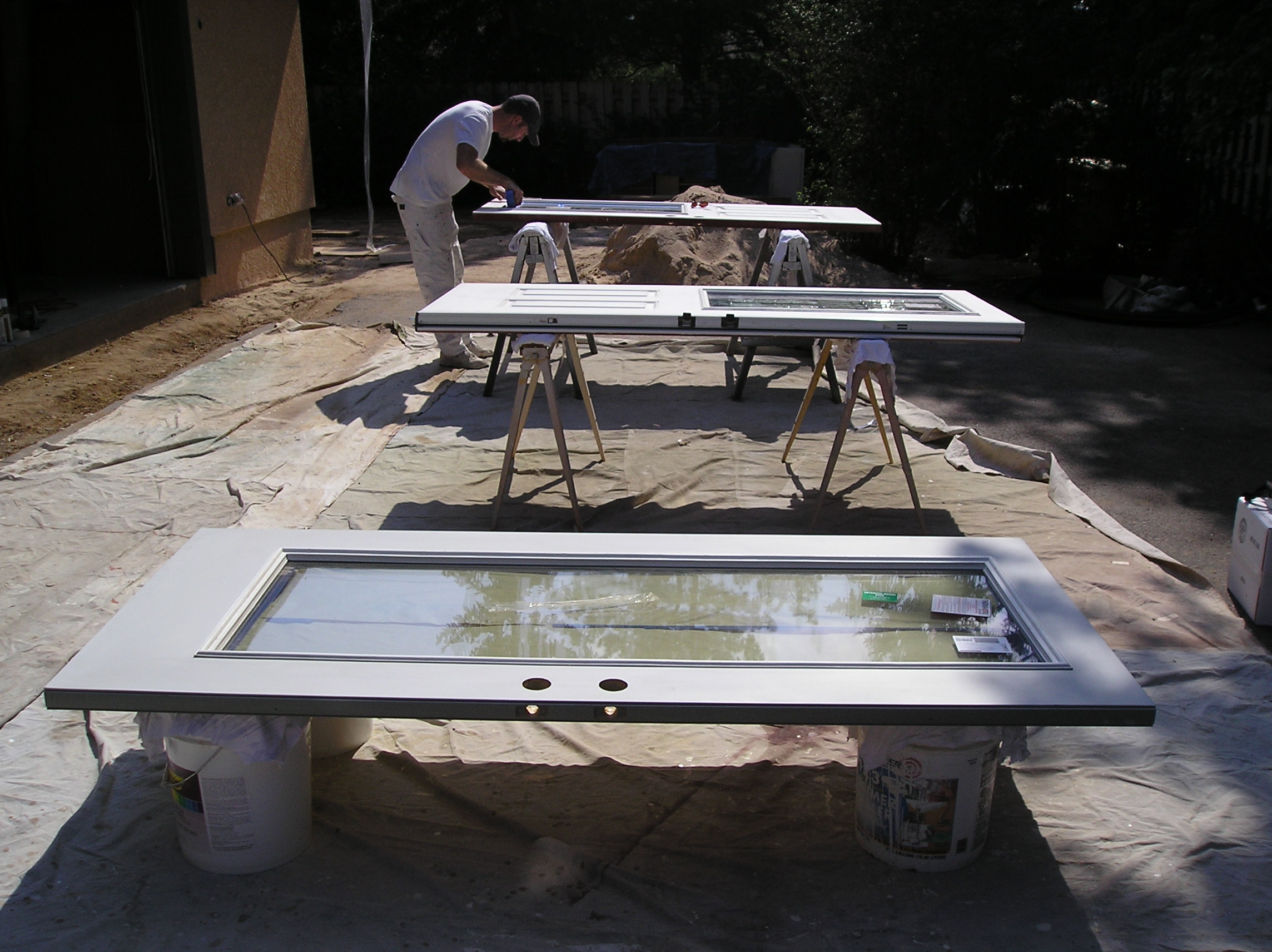For the best possible results paint spraying a steel door is the way to go. Painting a steel door with a paint sprayer can produce the smoothest possible finish as long as a few simple guide lines are followed.
Before starting up the sprayer properly prepare the door and frame. Spraying a steel door requires a clean and smooth surface for the best results. The amount of sanding depends on whether the door is new or previously painted. All defects, including brush marks and roller stipple, will show and probably be enhanced when sprayed.
After all the sanding and cleaning is finished the masking will need to be done. Masking includes fully and carefully covering everything that won’t be painted. This can include glass and the opposite side of the door. Remember to plug the holes for the dead bolt and handle with paper or the opposite side of the door will be over-sprayed.
Now that everything is ready it’s time for the next steps. These steps are very important and will affect the final outcome when spraying a steel door.
- Choose Your Paint Sprayer – You can use either an airless paint sprayer or HVLP sprayer. Both will provide a great finish. The airless sprayer will be faster and is the better choice when spraying exterior acrylic paints.
- Choose Your Paint – The type of paint you choose to use not only affects how long it takes to paint a steel door but also the drying time and how soon it can be re-hung on the frame. In most cases 100% acrylic paint is the best choice, but alkyd paints, especially industrial enamels, can be a tough alternative.
- Condition the Paint – Paint conditioning products are easily found at your local paint store or home improvement center. I use products produced by The Flood Company, Penitrol for oil base paints and Flotrol for water-based paint. These products help the paint flow on the surfaces and produce a smoother finish. Remember these products help the paint flow on the surface, to much can cause the paint to run or sag. Follow the manufactures recommendations first then adjust according to the environmental conditions.
- Use the Correct Spray Tip – The spray tip size is very important when using an airless paint sprayer. To small and the primer or paint will exit the tip with “fingers” at each end of the spray fan and to big will deposit a large amount of paint on the doors surface.When spraying a steel door I use a 311 or 313 spray tip with exterior acrylic and 310 fine finish or 311 with alkyd finishes. The same spray tip can be used with the primer or finish paint. Choose an airless spray tip that best matches your paint and properly condition both the primer and paint for better results.
Procedures for Spraying a Steel Door
Spray painting a steel door is best done with the door removed from the frame and either put on sawhorses or leaned against a wall.
- I prefer using sawhorses. With the door(s) laying flat an even coat of paint can be applied without worrying about runs or sags. Before laying a door on sawhorses protect it from scratches by covering each sawhorse with clean rags or other protective material.
- Leaning a door against a wall involves covering the wall with light weight plastic in order to protect it from overspray. Another method I use is attaching two pieces of 1×2 lumber to the top of the door with screws. This will keep the door away from the wall, a convenient way to paint both sides of the door at the same time.
The best quality finish comes from controlling the amount of paint that is applied. Too much paint to fast will produce an effect similar to the skin of an orange. Too little paint will produce a surface that is ruff to the touch. This is why conditioning the paint for the best flow and spray pattern plus choosing a small spray tip is critical.
Spraying a steel door is really quite simple. Begin spraying the hard to reach areas first, door edges, raised panels and the window frame. Watch out for heavily applied paint. The edges can easily develop runs or sags.
Now spray the main areas. Overlap each pass of the spray fan 50%. It doesn’t matter which direction you spray from as long as the next coat is opposite. The final coat should be all in one direction from top to bottom. Apply the primer and paint in the same manner.


